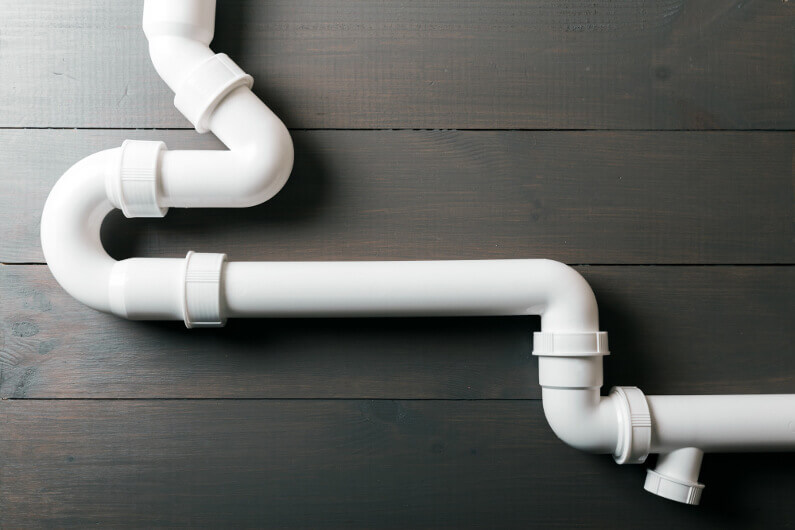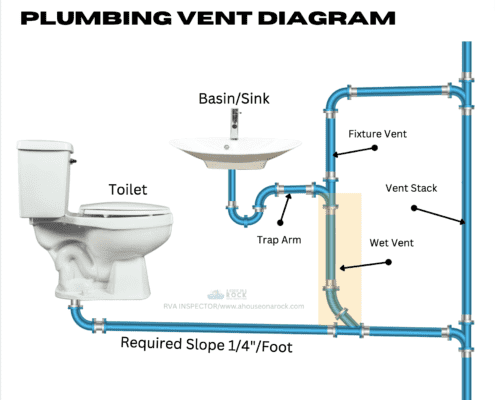The Reasons Why Correct Ventilation is Vital for Plumbing Systems
The Reasons Why Correct Ventilation is Vital for Plumbing Systems
Blog Article
Have you been searching for facts concerning Essential Plumbing Vent Pipes: Understanding Their Role?

Correct ventilation in pipes systems is typically forgotten, yet it is important for keeping the performance and safety of your home's pipes. Air flow helps manage atmospheric pressure, prevent the build-up of damaging gases, and guarantee the efficient elimination of waste. In this overview, we will check out the relevance of correct plumbing ventilation, exactly how it works, and the advantages it gives your plumbing system.
Recognizing Ventilation in Pipes
Air flow in pipes refers to the network of pipes that allow air to move with the drainage system. These vents serve several functions, including regulating atmospheric pressure within the pipes, preventing sewage system gases from entering the home, and aiding in the smooth circulation of wastewater.
Just How Air Flow Functions in Plumbing Solutions
Air Pressure Law
Correct ventilation keeps well balanced atmospheric pressure within the pipes system. When water streams through pipes, it displaces air. Without sufficient air flow, this variation can produce adverse pressure, leading to slow drains pipes or siphoning of water from catches, which can create undesirable smells to permeate right into the home.
Protecting Against Drain Gas Accumulation
One of the most important features of plumbing vents is to avoid drain gases, such as methane and hydrogen sulfide, from accumulating within the home. These gases can pose serious health and wellness dangers and are very combustible. Vent pipelines permit these gases to get away safely outside.
Aiding in Waste Removal
Air flow aids in the reliable elimination of wastewater by preventing airlocks in the water drainage system. When air can flow openly with the vents, it enables water and waste to move smoothly via the pipelines, decreasing the threat of obstructions and back-ups.
Types of Plumbing Vents
Main Heap Vent
The major stack air vent, additionally called the air vent pile, is the main vent in a pipes system. It expands from the primary drain line up through the roof covering, permitting gases to get away and fresh air to enter the system.
Branch Vent
Branch vents link to the primary stack air vent and serve individual components, such as sinks, bathrooms, and showers. These vents ensure that each fixture has adequate air flow to operate effectively.
Air Admission Valve (AAV).
An Air Admission Valve (AAV) is a one-way shutoff that permits air to enter the plumbing system without the need for a typical vent pipe prolonging via the roofing system. AAVs are generally made use of in remodellings or locations where setting up a typical air vent is impractical.
Indicators of Poor Air Flow in Plumbing.
Slow Draining Fixtures.
If your sinks, bathtubs, or toilets are draining slowly, it could be an indication of bad ventilation. Inadequate air flow can create a vacuum cleaner impact, making it tough for water to drain properly.
Gurgling Appears.
Gurgling sounds originating from drains pipes are typically an outcome of air being sucked via water traps due to adverse pressure in the pipelines. This is a clear indication of insufficient air flow.
Unpleasant Odors.
Sewage system odors inside your home are a red flag that your plumbing system is not effectively ventilated. This can mean that sewage system gases are not being adequately aired vent outside, bring about potentially dangerous conditions.
Typical Ventilation Blunders.
Inadequate Vent Sizing.
Making use of small vent pipelines can cause poor air flow and stress imbalances in the system. It's essential to utilize vents that fulfill the certain needs of your pipes system.
Improper Vent Placement.
Positioning vents too much from the components they offer can lower their efficiency. Appropriate positioning makes sure that air can move easily and efficiently through the system.
Disregarding Code Needs.
Building ordinance supply particular standards for plumbing ventilation. Disregarding these codes can result in a system that stops working to operate correctly and may bring about expensive repairs or carcinogen.
Advantages of Correct Ventilation.
Enhanced System Effectiveness.
Properly aerated pipes systems operate extra efficiently, with fewer clogs, faster draining, and less stress on the pipes. This effectiveness prolongs the life expectancy of the plumbing system.
Improved Air Quality.
By protecting against drain gases from entering your home, proper ventilation contributes to better indoor air high quality, making your living setting healthier and a lot more comfortable.
Preventing Water Damages.
Ample ventilation helps avoid water from being siphoned out of catches, which can lead to sewer gases getting in the home and triggering water damages in time.
Actions to Ensure Proper Air Flow.
Consulting Pipes Codes.
Constantly speak with local plumbing codes when making or customizing your pipes system. These codes supply the needed standards for proper airing vent and guarantee your system fulfills security requirements.
Routine Examination and Upkeep.
Regular examinations can assist identify possible ventilation problems before they become significant problems. Upkeep jobs, such as cleaning up air vent pipelines and checking for clogs, are essential for keeping the system in good working order.
Expert Setup.
For brand-new setups or major adjustments, it's a good idea to work with a professional plumbing technician. They have the competence to ensure the ventilation system is correctly designed and set up according to code.
Final thought.
Appropriate air flow is a critical element of any type of plumbing system, ensuring that it works effectively and safely. By recognizing the relevance of air flow, identifying the indications of bad ventilation, and taking actions to preserve your system, you can protect against expensive concerns and protect your home's air quality.
Understanding the Role of Your Plumbing Vents in the Drainage System
The plumbing system in your home is more than just the kitchen sink, toilet, and bathroom. Some problems that arise within home plumbing are hard to detect because homeowners may not understand potential causes.
One part of the plumbing system that could cause you endless problems is the venting. The drain lines that run through your home and drain wastewater need proper venting to function properly. Faulty plumbing vents can lead to several problems that require the expertise of a plumber to check them out. Before finding experienced plumbing services, there are a few things to learn about plumbing vents.
Why vents are vital
Vents in the plumbing system lead to an outside area such as the roof or the back. The function of these vents is to keep sewer gases away from the drain pipes. They also establish seals in the drainage pipes that prevent the sucking back of waste gases into the home. Venting in the plumbing system also allows oxygen to get into the drainage system, which is an essential component in the breakdown of waste matter. The vents also ensure that the air pressure within the drainage system remains balanced, facilitating the flow of wastewater.
Possible problems
When the plumbing vents are problematic, one of the consequences is imbalanced water levels in the toilet. If you notice that the levels in the toilet bowl rise and fall all the time, then there may be something wrong with the vents.
Another issue is air bubble formation within the toilet. In most cases like these, the drain pipes are not receiving enough air. Lack of air pressure equalization is what leads to water flow problems. If you come across such issues in your home, make sure you call professional plumbers, such as the ones from Perfection Plumbing & Drain Cleaning Ltd.
Potential causes
Several scenarios can lead to some of the plumbing problems that homeowners suffer because of venting. One such scenario is the use of incorrectly sized vents. Usually, vents are the same size as the drain line to facilitate proper venting. Vents that are too small will lead to some plumbing issues. Another potential cause is fixtures that are not close enough to the vents. In this scenario, air forces itself through the traps of other fixtures, leading to gurgling sounds from toilets and sinks.
Most of these problems also happen with clogged vents. Tree leaves and debris can cause clogging when they make their way down a vent. Unclogging plumbing vents is a service that you can entrust to Saskatoon plumbers. They will know how to snake down vents and remove clogging stuck in fixtures.

I am just very curious about What Are Plumbing Vents and Why Are They Important? and I am assuming you liked my post. Loved our content? Please quickly share it. Let another person find it. I value reading our article about .
Call Today Report this page